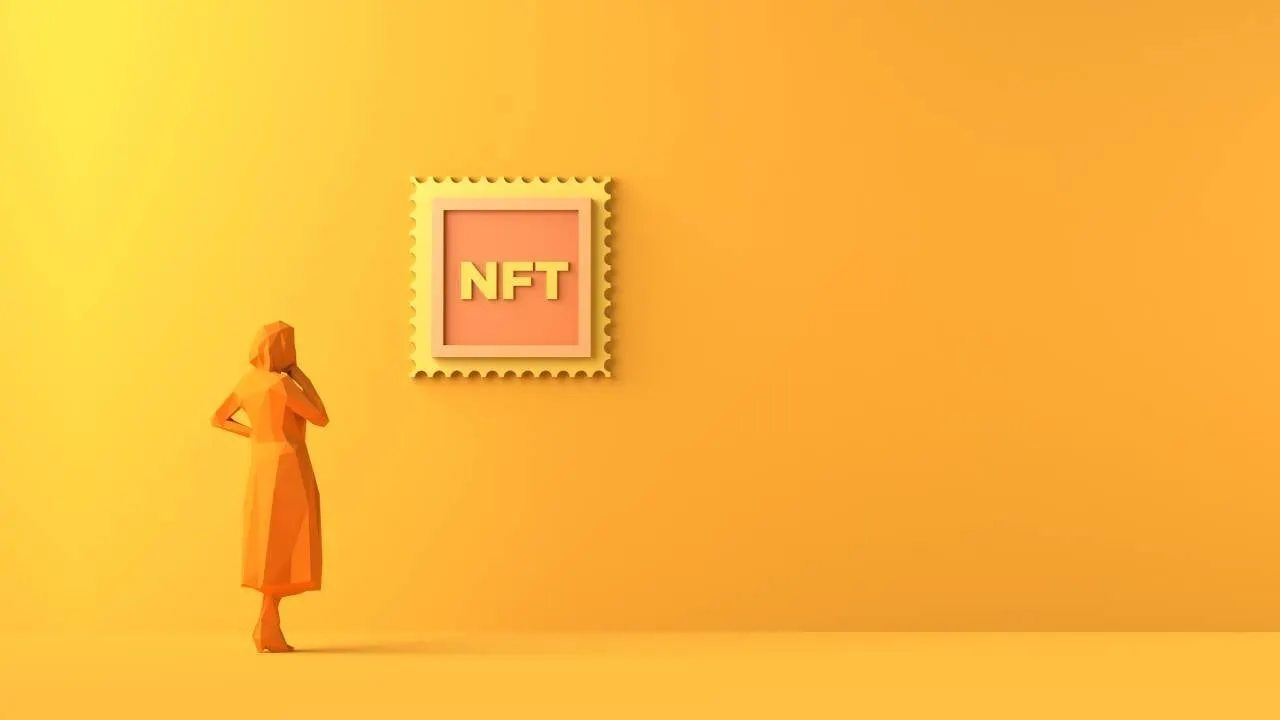Non-fungible tokens (NFTs) have gone from niche to mainstream in the past year, with explosive growth in sales volume accompanied by innovative use cases for the cryptographically unique tokens. Vibrant new communities have emerged around NFTs linked to sports, digital art, music, and film.
Yet even as new brands, game experiences and metaverses are being built, a corresponding financial layer remains underdeveloped.
This is the area to watch, and it’s replete with derivative options for NFT fractionalization, lending and more, said Daniel Yan, founding partner and chief operating officer at Matrixport, a Singapore-based financial services platform with $10 billion of client assets under management.
“With the NFT as an asset class, it starts to become massive,” Yan told Decrypt.
A liquid future for NFTs
The critical issue of liquidity is the "key" to building the robust financial layer that's integral to the healthy growth of the sector, said Yan. “Liquidity helps you to grow the thing much faster than you would have expected.”
Today, it’s still too expensive or difficult to lend out and generate interest from a high-value NFT, such as a Bored Ape. But without the means to monetize NFTs, the industry will be unable to deliver on its initial promise.
11/ If you are building in this space, we would love to hear from you! Please reach out to @looksrare_eth or reach out to the emails in our medium articlehttps://t.co/CC60LAixv7
— Matrixport (@realMatrixport) April 1, 2022
So even while leading marketplace OpenSea trades between $50-120 million daily, this maturity has yet to make its presence felt in the wider industry. “Everything else is pretty premature,” says Yan, pointing out that the trading volume of fractionalized NFTs, NFT lending and leasing is in the region of a million dollars a day, or less.
But that’s about to change, Yan said, highlighting five verticals that Matrixport has identified as ripe for growth in a recent report on the financial layer for NFTs. They include NFT fractionalization, lending, rental, pricing and aggregators.
1.NFT Fractionalization
One area with potential for increased trading volume is fractionalized NFTs. If NFTs are, essentially, split into pieces, and sold in fractions, they become smaller and more tradable—more liquid.
“There are natural demands for liquidity to aggregate somewhere because people can use that to trade and use it as collateral,” Yan explains.
"Fractionalization, rental and pricing are extremely important for the health of the [NFT] industry."
It’s a corner of the industry that’s not lacking in infrastructure. Key players identified by Matrixport include NFTX, which targets fractionalization of NFTs' floor price—the minimum price for the whole group. The project has launched NFT vaults for popular projects, and its CryptoPunks vault has $20 million in Total Value Locked (TVL).
Another project with potential is Fractional.art, which focuses on rare NFTs, alongside methods for fractionalizing and piecing back together tokens.
Last June, art acquisition collective PleasrDAO bought the original NFT of the Doge meme for $4 million. They successfully fractionalized it on Fractional.art, and the result was the $DOG token, which hit a market cap of over $500 million just days after its launch.
2.NFT Lending
Development of lending protocols lags behind when compared to fractionalization, and falls into two segments.
The first is peer-to-peer (P2P), which lacks liquidity and scalability, and the second consists of liquidity pools, which use floor prices to enable loans using NFTs as collateral. There are issues with this approach because of the potential difference in rarity scores in different pools. “I’m just not sure that that's the solution,” says Yan.
Active projects in the space identified by Matrixport include MetaStreet, which acts as a liquidity provider for P2P NFT lending protocols, and Bridgesplit, a liquidity pool-based NFT lending protocol on Solana.
Borrowers are often people who hold NFTs of relatively reasonable value, and they want to be able to access funds, without selling, because they believe the value will increase.
Meanwhile, lenders are people who want to make interest. They are happy to take the risk of these collateralized NFT loans, and there are many different ways of designing them.
3.NFT Rental
NFT rental opportunities are split into two sectors: land in virtual territories such as Decentraland, and gaming instruments.
With virtual land trading hands for millions of dollars, it's unsurprising that speculators are snapping up land NFTs to flip. But some prefer to rent—and are happy to pay for prime, virtual real-estate space on which to build, or host a club or marketplace and make money—just like in real life, said Yan.
New use cases, such as reserving or subletting NFTs, could potentially lead to something like an “Airbnb of the metaverse,” according to Matrixport’s analysis. But a rental boom in the metaverse will take time.
Another expanding area of the rental market is around play-to-earn games like Axie Infinity, in which players do battle with Pokémon-style monsters represented by NFTs. Through so-called "scholarship" programs, players can rent out popular Axies, with the owners earning around 15% of any gains.
It’s an exciting sector and, although its development may not be fast, “the demand and supply will naturally come together with the growth of the metaverse and games,” said Yan.
4.NFT Pricing
Pricing NFTs is a challenge; the discrepancies in the prices of tokens means they are extremely difficult to value, said Yan. Statistical methods and machine learning are of little use when the main issue is that only a small proportion of an NFT collection is trading on a particular day, and every day is different, making it difficult to exploit trading data.
One of the most popular pricing methods is to use a floor price, “but as you can imagine, that's far from accurate,” said Yan.
Even so, a reliable approach to NFT pricing is important to the wider sustainability of the industry. “It’s very helpful for people to make predictions, trade and essentially to attract savvy institutions and money,” said Yan.
Financial instruments like loans and lease agreements are all reliant on a very accurate, liquid underlying market, so many protocols are wrestling with the pricing question. Meanwhile, the frequency of wash trading—a result of low liquidity and predominance of P2P— compounds the need to better address the issue.
5.NFT Aggregators
NFT aggregators combine multiple buys into one transaction, offering better prices and liquidity through the aggregation of multiple marketplaces.
They function very similarly to Web2 marketplaces like Kayak and enable buyers to scoop up a particular category of NFT across different marketplaces, while minimizing the costs of transaction fees.
Today, OpenSea is the dominant marketplace, so aggregators have yet to gain traction. But as the industry starts to grow, and more specialized marketplaces start to see adoption from users, the arena will become more competitive, said Yan. That’s when aggregators such as gem.xyz and genie.xyz will really start to make sense, helping users to access better liquidity and prices.
A robust financial layer
The verticals that make up the financial layer will attract a more diverse group of investors who will bring with them the liquidity the industry needs to realize the opportunities on offer. “We don't have that at the moment. It's still a very small group. Most of the people are really cool, but smart money's involvement in this is very limited,” said Yan.
"These primitives are going to take off in the next one or two years."
He considers many of the verticals interconnected, and interdependent. “Fractionalization, rental and pricing are extremely important for the health of the industry, for NFT markets to grow, and aggregators and lending are reliant on them.”
However, “these primitives are going to take off in the next one or two years,” he predicts. Big, ambitious structures are being built, and soon.
Sponsored post by Matrixport
Learn More about partnering with Decrypt.





